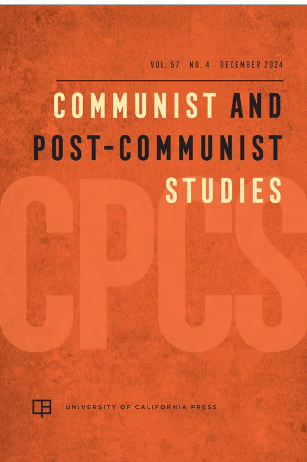By using the humanitarian convoy as a pretext, Moscow may seek to establish an open, legitimate-looking ground presence in Eastern Ukraine, thus blocking the continuation of Kyiv’s military operation there, and sustaining the rule of pro-Russian separatists.
According to extensive reports by Western journalists, as well as official Ukrainian sources, contingents of the Russian armed forces started to enter Ukraine on the evening of 14 August, without the permission of the Kyiv government. Meanwhile, the Russian Ministry of Foreign Affairs demanded the cessation of Kyiv’s military operation in order to ensure the safe distribution of humanitarian aid in Eastern Ukraine. With this intervention – regardless of the Kremlin’s official humanitarian discourse – Russia has clearly and openly violated the sovereignty of Ukraine once again since the annexation of Crimea.
The proxy war supported by Russia in Eastern Ukraine has certain limitations in terms of military power and sustainability. First, irregular militias will not be able to withstand an advancing regular army for long. Unless they give up most of the territories they are holding, they will bleed out in the uneven fighting, as will the separatists of Eastern Ukraine. Since the election of Petro Poroshenko as the President of Ukraine, the Ukrainian army has intensified its actions against the separatists. In addition to relying on their superior firepower provided by tanks and armoured personnel carriers, government forces are also employing large-scale artillery and air strikes in order to break the resistance of the separatists. Since July, the rebels have lost most of the territory they had formerly controlled. By 13 August, Donetsk was already surrounded and had become isolated from other rebel-held territories. Ukrainian forces have been paying a high price for these successes both in terms of military and civilian losses, but the general trend seemed to be clear.
Second, concerning logistics, the separatist resistance depends on supplies flowing in from Russia. It is of paramount importance for the rebels to keep the adjacent section of the Ukraine-Russia border open, and not controlled by Kyiv. Without a direct connection to Russia, the separatists would not be able to obtain the necessary supplies, food, ammunition and medicine. Nor would it be possible to get reinforcements in, and wounded combatants out.
In short, this is what the strategic situation looked like in mid-August 2014, and Russia consequently had to change the course of events somehow. This was the moment when the Kremlin came up with the idea of sending a massive aid convoy of some 270 heavy trucks to Eastern Ukraine, officially in order to address the unquestionably dire humanitarian situation in the Luhansk region. The move was preceded by weeks of increasingly strong humanitarian argumentation in the Russian official discourse about Ukraine.
The convoy was suspicious from the outset for a number of reasons. First and foremost, Russia was not a neutral player in the conflict, but an active supporter of the separatists. Second, although it was said to be on a humanitarian mission, the convoy actually departed from Naro-Fominsk, a town in the Moscow region and home to the 4th Guard Tank Division of the Russian army, which was suspicious to say the least. Third, it was not possible for any outside authority to check the convoy’s cargo, or to verify its humanitarian purpose. Hence, there was no way of verifying that the Russian convoy was not going to actually contribute to prolonging the fighting by delivering arms. Fourth, the convoy’s mandate remained unclear when the trucks were in transit. Even though Russia consistently referred to the International Committee of the Red Cross, with which the move was said to be fully coordinated, the Switzerland-based humanitarian organization never confirmed the existence of any mandate. Fifth, if attacked by the separatists or by pro-Kremlin provocateurs, the convoy could have served as a pretext for a massive Russian attack.
Taking all these factors into account, it was hardly surprising when, on 13 August, the Ukrainian government refused to let the convoy enter the country. However, when the trucks turned southwards from Voronezh on 14 August, it soon became clear that they were trying to enter Ukraine from the East, through the rebel-controlled territory. This was possible because between 11 and 13 August Kyiv had lost control of the border with Russia on an almost 100-kilometre-long section east of Luhansk.
It is worth noting how the whole convoy story, including the contradictory information on a Red Cross mandate, was used by the Russian mass media to divert international attention away from the actual collapse of Ukraine’s border defence in the East.
At this point, Ukraine was stuck between a rock and a hard place on how to react to the convoy. One unpalatable scenario would have involved letting the trucks in, and protesting only in diplomatic and economic ways. This could have produced an outcome similar to the one that occurred in Abkhazia in 1993: had the convoy delivered arms, the resistance would have become much stronger than it was before. A significantly worse outcome of the same alternative might have involved Russia exploiting the severe situation of the civilian population in Luhansk as a pretext for a ‘humanitarian’ intervention, using the NATO argument from the 1999 Kosovo campaign in a distorted way, and the convoy as a part of this manoeuvre. The other option for Ukraine would have been to try to hold up or destroy the convoy. However, this would have provided Russia with a strong pretext for an invasion, to avenge the killing of Russian citizens. In the end, the open intrusion of Russian army units resolved the dilemma: they entered Ukraine anyway.
All in all, Moscow may be successful in changing the strategic course of fighting in Eastern Ukraine. By violating the territorial integrity of Ukraine, Russia may seek to establish a massive presence on the ground, claiming a humanitarian pretext. From now on, Moscow may gain the capability to effectively block the continuation of Ukraine’s military operation in the Luhansk region, and thus sustain the rule of pro-Russian rebels there for an indefinite period. Moreover, the floodgates may now be open both for the annexation of the region to Russia, or for the creation of another Transnistria, namely a non-recognized quasi-state.





